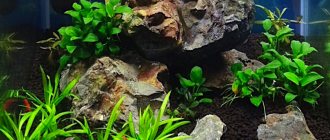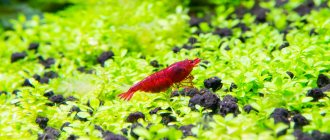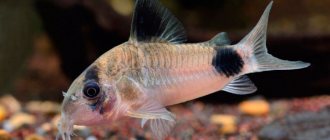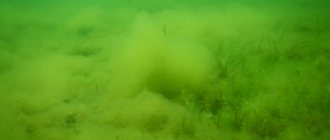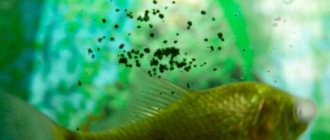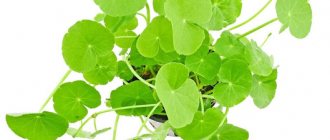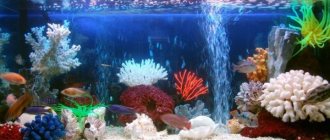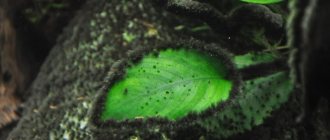Red cherry shrimp (Neocaridina heterpoda var. red)
Kingdom: Animals; Phylum: Arthropods; Subtype: Crustaceans; Class: Malacostraca; Family: Atyidae; Genus: Neocaridina; Aquarium volume: From 40 liters, but a small amount can be contained in aquariums from 10 liters; Content difficulties: Easy;
Water parameters: temperature: 22–29 C, pH 6.5 – 8.0, kH 3 – 10; Life expectancy: 1 – 2 years; Body length: Up to 4 cm; Color: Red; Diet: Omnivore;
Red Cherry Shrimp, Cherry Shrimp, Cherry Red Shrimp and abbreviated RCS (hereinafter referred to as “Cherry Shrimp”) is a complex, brightly colored, peaceful representative of the freshwater aquarium. Cherry shrimp are one of the most popular shrimp around the world, breeding easily and surviving even in harsh beginner aquariums. Many shrimp lovers start with this species. After gaining experience with cherry shrimp, aquarists move on to keeping more demanding species such as the Amano shrimp and the red and black crystal shrimp .
We recommend watching our video about cherries
Cherry or cherry is a species selectively bred in Germany, obtained through a long process of crossing wild shrimp Neocaridina Heteropoda. An aquarium with shrimp of this type should be well planted with plants; cherry shrimp sit on them in red clusters, moving with their tiny paws. Plants play the role of a house - a place where you can hide after molting. It is highly advisable to use mosses ; young animals have a better chance of surviving in them. Like all invertebrates, cherry shrimp are sensitive to copper, so copper-based medications (copper sulfate is a common ingredient in complex medications, as well as a snail repellent) are prohibited for use in a shrimp tank.
Micro-fertilizers for plants, which also contain copper, can be safely poured into the shrimp tank. There is a negligible amount of copper in them.
cherry shrimp
The main mistake of novice aquarists is leaving uncontrolled poisons - ammonia , nitrite and nitrate , which accumulate in the aquarium. They make shrimp swell faster than fish. We urge you to obtain drop tests and monitor their concentrations. We recommend our domestic UHE . Sold online only. And in Akvionika.
Among inexpensive offline tests, we can recommend Vladokovsky ones .
Habitat
These cute creatures are home to the Chinese island of Taiwan, although their closest relatives, called neocaridins, inhabit the lakes, calm rivers and forest streams of Japan, southern China, Hawaii and Korea. In natural conditions, neocaridins look inconspicuous, which allows them to successfully camouflage themselves, since they simply have no other protection from numerous enemies.
Their flimsy shell cannot serve as protection, being content with the function of an external spine, since invertebrates do not have an internal one. The red color, which in the wild would be simply suicidal for these representatives of arthropods, was given to shrimp by German breeders.
Did you know? Invertebrates include 97 percent of all animal species currently existing on the planet.
Sexual differences in cherry shrimp
It is quite easy to distinguish females from males: males are agile, smaller and less colored. More precisely, males have colored stripes on the back, sides and a little speckling on the body. Females have a more convex abdomen. You can often observe that when the shrimp tank is revived, the males swim and crawl in all layers of water, while the females at this time prefer to move sedately along the bottom or surface of the plants. The moment when the female throws reproductive products into the water is impossible not to notice - the males behave so animatedly.
Kinds
The family of this shrimp includes 150 species, of which the most popular among aquarists are:
- Yellow shrimp, which differ from cherry ones only in color and increased cheerfulness. It is not for nothing that these cheerful and brightly colored creatures, which were bred by Japanese breeders, are also called canaries.
- Red crystal called shrimps with a very impressive coloring in the form of bright red stripes on a white background. Unfortunately, this species is not recommended for intensive breeding, since its representatives, due to inbreeding, are weakly resistant to the complexities of the environment.
- Harlequins also painted red and white and are miniature creatures only 1.2 cm in length. These shrimp are extremely shy, which is not surprising given their complete defenselessness in front of the realities of the world around them.
- Amano – this name is given to green shrimp, decorated with a lighter stripe along the back and brown spots along the sides. This species is very useful for keeping the aquarium clean, as it destroys harmful algae, but is very finicky in breeding.
- Red-nosed shrimps do not have a red nose, or any nose at all, but are named so as a joke for the red spot located on the front of the head. These are the largest individuals among their close relatives, reaching an average of 4 cm in length. They also do a good job of controlling harmful algae.
- Riley shrimp are champions in the variability of their coloring. There are already blue, orange, red, green, variegated and almost transparent specimens. An excellent material for breeders, it has great variability and is easy to experiment with.
Transportation and adaptation
These defenseless creatures experience severe stress during transportation and relocation. Therefore, this process must obey certain rules:
- Transportation should take place at a slow pace and as carefully as possible.
- Before transportation, an underwater plant or moss must be placed in a container with shrimp (usually a plastic bag with water), which will protect the arthropods from shocks.
- The temperature of the water in the bag with shrimp should be similar to the temperature of the water in the container into which the cherries are transferred. To do this, place the bag in the aquarium, adding aquarium water into it in small portions.
- Before introducing new cherries into an aquarium where other arthropods already live, it is necessary to keep the new cherries in quarantine in a temporary shelter in which there are no other living creatures, but there is vegetation, substrate, moss and shelters.
- When the cherries are finally moved into the aquarium, they will experience stress again, so you need to be prepared for the fact that mass molting will begin again, and the females will begin to shed eggs.
Did you know? Fertilized shrimp eggs have a phenomenal reserve of vitality. From a completely dried egg with an embryo, after it gets into the water, a fry can hatch in a few hours.
Description
This is a small shrimp, rare specimens grow up to 4 cm in size, usually they are smaller. They live for about a year, but given that there are usually several dozen individuals in an aquarium, life expectancy is difficult to estimate accurately.
The color itself is indicated by the name; they look especially bright in an aquarium against a background of greenery, for example, dark Java moss. It’s hard to say about any specific features; the cherries are miniature and you can’t really see anything special.
How long do they live? Life expectancy is short, about a year. But usually during this time they manage to bring a lot of babies.
Care and maintenance in the aquarium
The size of the aquarium in which the cherries live depends on their initial number. For a small flock, a ten-liter volume is enough. But since these shrimp are prone to rapid and abundant reproduction, you should think about this in advance and prepare a forty-liter tank that is most suitable for the home population of shrimp. Shrimp are school creatures; they feel most comfortable in a group of at least a dozen of their relatives.
The optimal water temperature should be between 18-25 degrees, the required acidity pH is 6.5-8. Particular attention should be paid to the hardness of the water, since shrimp simply will not be able to fully form their shell in soft water, so water of medium hardness is recommended. Despite their unpretentiousness, cherries simply do not tolerate the presence of copper and ammonia in water. In addition, a weekly change of one third of the water is required.
Experts recommend not to allow the following fish into the same water space with crustaceans: astronotus, clown fish, diamond-shaped piranha, arowana, cichlids and cichlids.
Aeration is necessary, but large air bubbles that create unwanted water movement should be avoided. There are also special requirements for the filter, since its standard version can include babies that have just hatched from eggs. For cherries, a sponge filter is desirable. For the soil, a layer of medium-sized dark pebbles 2 cm thick is best suited. And among algae, aquatic plants with small leaves and moss are preferable.
Find out if it is worth keeping crabs in an aquarium.
It is best to plant your aquarium with the following plants:
- Java moss;
- riccia;
- flame;
- Indian fern;
- lamariopsis;
- Christmas moss;
- Cladophora.
Java moss is almost ideal for an aquarium with cherries. In addition to its high purely decorative qualities, it is also often noted that it excellently retains food particles that shrimp feed on and serves as a reliable shelter for both adults during molting and for fry.
Feeding
Cherry shrimp are extremely unpretentious in food and eat almost everything edible that comes into the aquarium. They do not even disdain the bodies of their dead relatives, fish, snails and other living creatures, although they are peace-loving creatures. They simply act as orderlies of their home, for which aquarists can only be grateful to them. It has been noticed that if these creatures live in a container planted with plants along with fish, then they don’t have to be fed at all, since they get by just fine with fish food. When shrimp exist separately, they need to be fed often, but not too much.
The most successful foods are those made from the following products:
- frozen bloodworm;
- Daphnia;
- frozen parsley, eggplant, bell pepper, zucchini;
- oak, willow, maple leaves;
- young carrots;
- dandelion leaves;
- nettle leaves;
- spinach;
- cucumbers;
- boiled zucchini.
Compatibility with other inhabitants
It has been noticed that Endler's mini-guppies are almost ideal neighbors for cherries. For some reason, in the company of these small and peace-loving fish, shrimp reproduce especially intensively.
Cherries also live well in the vicinity of:
- swordtails;
- common guppies;
- gourami;
- catfish;
- zebrafish;
- ordinary neons;
- cardinals;
- mollies.
Keeping shrimp together with:
- scalars;
- cichlids.
How to maintain color
In the midst of rapidly multiplying specimens in the aquarium, you can increasingly notice that the magnificent cherry color of the shrimp becomes paler with each new generation. The way out of this situation is to remove the most unpresentable specimens from the aquarium and add new representatives in the form of bright individuals, the purchase of which will have to fork out money.
To maintain the brightness of color in representatives of the existing population, you should pay attention to the type and quality of food. Live and frozen food make the colors of the shrimp shell juicy and rich, while flakes often depress these colors. Special shrimp food also contributes to the color intensity.
Important! The soil in the aquarium must certainly be dark, otherwise the bright red color of the cherries will begin to noticeably fade as the shrimp begins to adapt to the light background of the bottom.
Compatibility
In their natural habitat, the ancestors of cherry shrimp - neocardines - are vulnerable to underwater inhabitants, and survive only thanks to the shell and protective camouflage, which is absent in red cherry shrimp. Therefore, to prevent pets in the aquarium from becoming food for predatory fish, coexistence of cherries is possible only with peaceful and small phenotypes:
- cuneiform rasboras;
- guppy;
- mollies;
- corridors;
- ordinary neons.
When introducing cherry shrimp into a species tank, you should avoid proximity to large and aggressive fish, such as cichlids.
How to distinguish a female from a male
The males of this type of shrimp are smaller than their friends and, unlike the same guppies, are less richly colored. In addition, the female has a wider tail, adapted for bearing eggs. By the presence of eggs in the form of yellow clusters under the tail and on the legs, it is easiest to immediately distinguish between males and females.
To keep shrimp comfortably in an aquarium, you will be interested in learning how to determine water hardness and the optimal water temperature.
Breeding
If the shrimp owner does not set himself any special breeding goals, then breeding these creatures does not present any particular difficulties. When there are few shrimp in the aquarium and other fish are present, it is best to remove the fish, since even the most peaceful of them can completely accidentally feast on the young. If the population of cherries is already substantial, and the reproduction process has acquired rapid forms, then the presence of fish is even useful for thinning out the rapidly growing shrimp population.
A female’s gestation of fertilized eggs, with an average of 25 eggs, lasts approximately 3 weeks. As they ripen, the green or yellow color of the eggs becomes darker. The fry, hatched from the eggs and measuring about a millimeter in length, look like greatly reduced copies of their parents. The first time after birth, they hide in algae thickets and feed on plankton and biofilm. After just a few days, the female is again ready to bear a new batch of eggs. So every year she is able to bear offspring about 10 times.
Reproduction
Sex differences
Female cherry trees are larger and more brightly colored than males. The female has a kind of “saddle” in which the eggs develop. It is located at the top of the shell in the head area. The color of the caviar is usually yellow or greenish. Another sign: the underbelly of females is curved, while that of males is elongated.
Getting offspring
Breeding cherry shrimp is not the most difficult process. The only thing that experts recommend doing is to temporarily remove all fish from the aquarium, including even guppies, so that they, through carelessness or misunderstanding, do not eat the young fish. However, such caution must be observed only at the initial stage of breeding, while the individuals in the aquarium can be counted on one hand. In the future, reproduction will proceed at such a pace that it may turn into a problem.
The fact is that the tiny, three-millimeter shrimp that are born are already quite viable, and after two months they are ready to bear offspring. Pregnancy lasts only three weeks.
Diseases
Most often, these representatives of arthropods suffer from parasites that penetrate under the shell, into the gills, muscles and even into the heart. The cherries affected by them are doomed.
Important! Fungal infections that are practically untreatable are extremely dangerous for shrimp.
This happens mainly in overcrowded aquariums, and infection most often occurs through newly arrived newcomers.
This is why the quarantine discussed above is so important. The presence of copper in water is extremely dangerous for arthropods. It can enter the aquarium through the use of fertilizers for underwater plants.
Also, according to experts, the death of cherries immediately after molting may occur due to a deficiency of iodine or calcium in the feed. Commonly used aquarium plants include hornwort, marsilia, Java moss and cryptocoryne.
Cherries live for 1-2 years, depending on the conditions and water temperature. Increasingly popular, cute, colorful and peaceful creatures are rightfully becoming welcome guests in many aquariums around the planet. Their harmless bustle pleases the eye, calms the nerves, and the presence of such creatures in the aquarium makes it more diverse and beautiful.
Behavior
Cherry shrimp are completely harmless, and if you see them eating a fish, then this is the result of natural death, and the shrimp only eat the corpse.
They are active throughout the day and can be seen moving around plants and decor in search of food.
Cherry shrimp regularly molt, and the empty shell lies on the bottom or even floats in the water. There is no need to be afraid, molting is a natural process, as the shrimp grows and its chitinous suit becomes tight.
You don’t have to remove it; the shrimp will eat it to replenish their supply of substances.
The only thing is that during molting they need to hide, here moss or other plants come in very handy.
